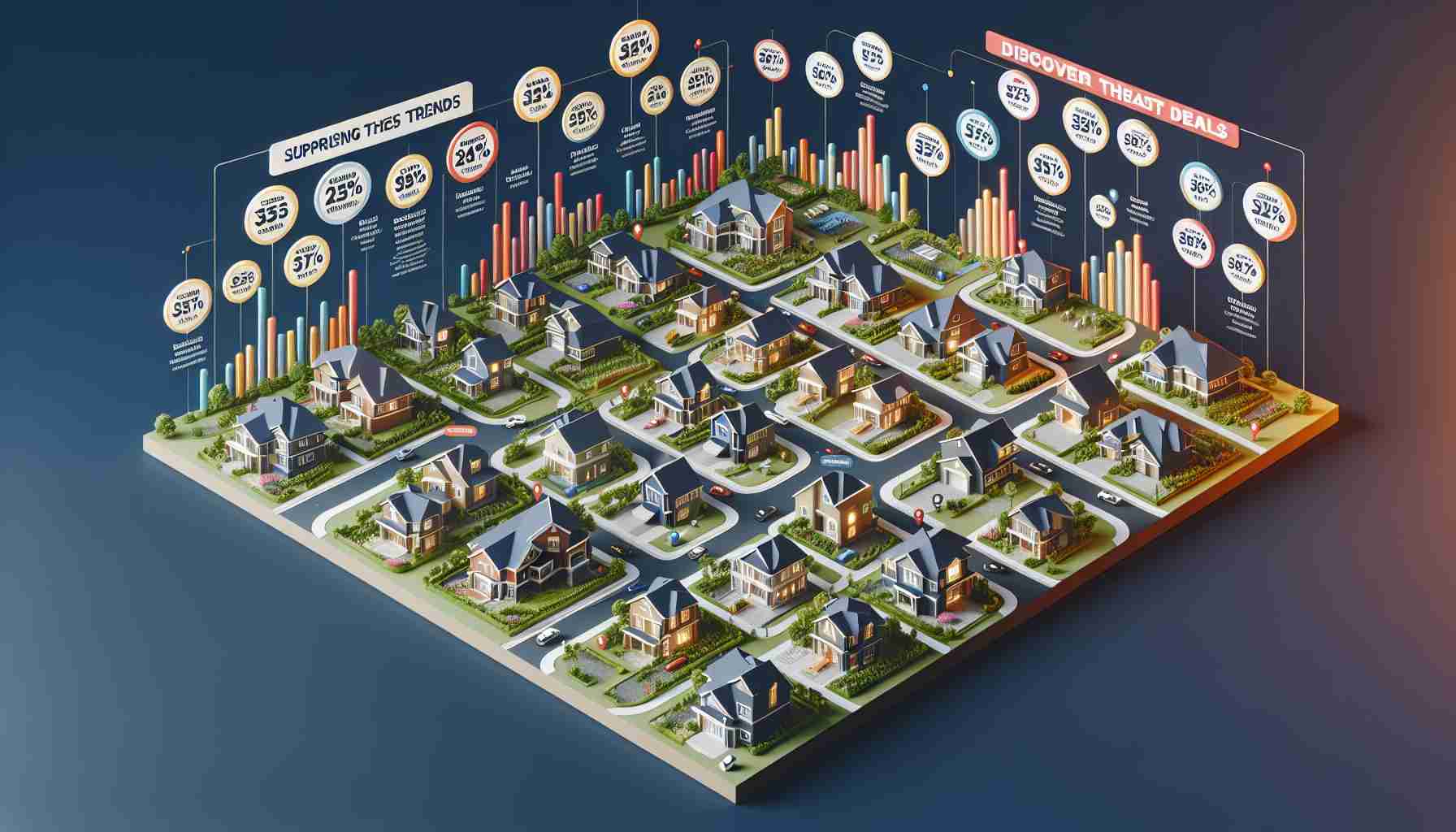The Changing Landscape of New Home Purchases
The quest for home affordability is shifting markedly, influenced by geographic preferences. As December wrapped up, data revealed a slight decline in the median listing price of new construction homes, with significant opportunities emerging in the South and West.
In 2024, the housing market witnessed a boom, with over a million new single-family homes listed, reflecting a steady increase from the previous year. The median price of these newly constructed homes averaged around $449,967, showing a small decline of 0.7% compared to the same month the year before. This marginal price reduction came with the added benefit of a decreased premium on new builds, dropping to a four-year low of 13.7%. Homebuyers now need to pay just over $54,000 extra for a newly built home, compared to existing houses, priced at a median of $395,800.
Moreover, there is a notable trend of smaller, more affordable new constructions entering the market, particularly in the South, where over 23% of listings are new builds, paired with a competitive premium of only 8.9%. In contrast, the Northeast and Midwest lag behind, facing significantly higher premiums and fewer new listings.
Despite high mortgage rates complicating the buying landscape, builders are increasingly offering attractive mortgage buydowns, making new constructions a savvy option for buyers seeking value.
The Broader Implications of Home Affordability Trends
The evolving dynamics of the housing market, particularly regarding new home purchases, carry significant implications for society and the economy. As home affordability becomes increasingly prioritized, regions like the South and West emerge as economic engines, attracting a diverse population seeking more accessible housing options. This migration not only reshapes demographics but also invigorates local economies, potentially leading to vibrant cultural shifts and increased consumer spending.
The increase in new home listings, especially in less expensive markets, indicates a broader trend towards suburbanization and urban exodus. Cities may see a decrease in population density, prompting changes in urban planning and leading to altered transportation needs. Furthermore, as many individuals pursue lower-cost living conditions, there is a chance for both challenges and opportunities in terms of public services and infrastructure development.
Environmental ramifications also merit attention. The rise of smaller, eco-friendly homes in less densely populated areas could diminish over-dependence on resource-intensive urban living. However, this shift may also spur increased land development pressures in previously untouched areas, raising concerns about sustainability and preservation of natural habitats.
Looking forward, the combination of attractive mortgage solutions and shifting geographic preferences could signal a transformative era in real estate, with long-term significance that challenges established norms and leads to potential innovations in housing design and community planning. As developers prioritize affordability, society may witness a fundamental redefinition of the American dream—one that aligns more closely with practicality than luxury.
Unlocking the Secrets to Affordable New Homes in 2024
The Changing Landscape of New Home Purchases
As trends in the housing market evolve, affordability remains a key concern for prospective homebuyers. In 2024, the landscape for new home purchases is shifting dramatically, with several noteworthy developments impacting buyers.
Market Highlights
– Rising Listings: The market saw over a million new single-family homes listed, marking a continuous rise from previous years.
– Competitive Pricing: The median price for newly constructed homes stands at approximately $449,967, reflecting a slight decrease of 0.7% year-on-year.
– Low Premiums: The premium for new homes has fallen to a four-year low of 13.7%, meaning buyers are spending about $54,000 more than existing homes, which have a median price of $395,800.
Regional Opportunities
– Southern Boom: The South is experiencing a surge in affordable new constructions, representing over 23% of all listings.
– Challenges in Other Regions: In contrast, the Northeast and Midwest face higher premiums and limited new builds, making it crucial for buyers in these areas to adapt to the market dynamics.
Innovative Solutions: Builders are responding to high mortgage rates by introducing enticing mortgage buydown options, making new homes an attractive choice for cost-conscious buyers.
Explore more about real estate trends and home buying strategies at National Association of Realtors.










